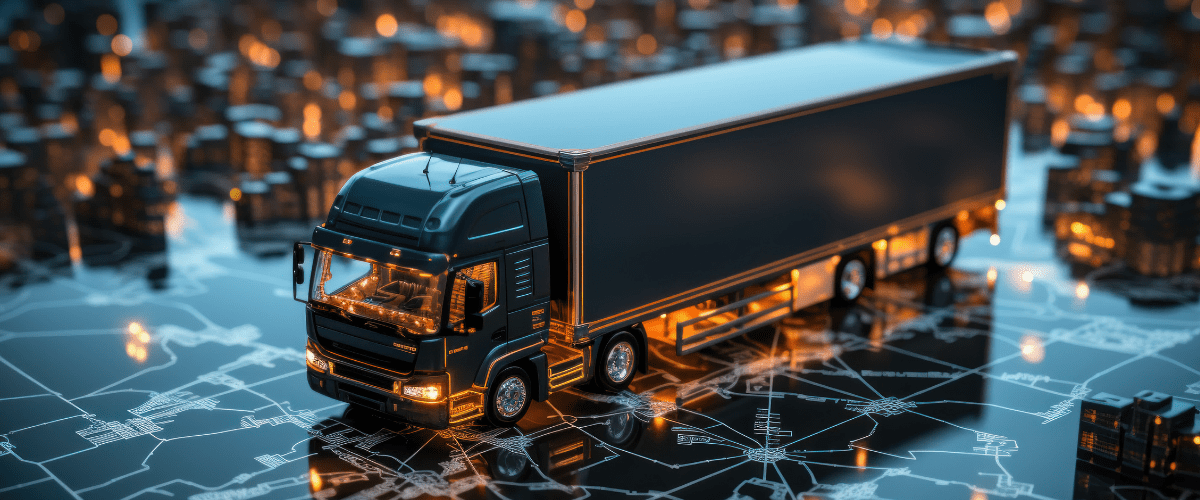Background and Importance of Drayage
Drayage refers to the movement of cargo and containers between the port and the final premises or the nearest rail depot, CFS, or warehouse, both at the origin or the destination ends of the journey. Drayage involves carrying the cargo in trucks over short distances, with the average distance per trip being less than 50 miles.
In theory, every container that needs to be delivered to the origin port or carried inland from the destination port needs drayage services.
It is an integral component of the multi-modal transport offerings that integrate various modes of transport utilized for a single shipment.
Drayage is thus the crucial initial and final link in international transport chains, complementing and completing the shipping process. Its function as the facilitator of first-mile and last-mile delivery makes it pivotal to providing end-to-end delivery services that global integrated logistics service providers are now focussing on.
The importance of drayage services lies not just in their role of facilitating timely transfers of containers between ports and final destinations, but also as a critical cog in the supply chain. When this element encounters issues — be it logistical, operational, or any other variety of potential factors — the impact on the entire supply chain can be significant, leading to delays, increased costs, and inefficiencies.
Challenges in Drayage Planning and Implications Thereof
Some of the common challenges encountered in drayage planning are explained below:
1. Delays due to supply chain disruptions or congestion at ports or Customs:
Global supply chain disruptions and congestion at ports can have a spillover effect on drayage services, as delays in unloading containers from the vessel or getting containers out of the port will also delay drayage transport.
Delays in customs clearance can also have a similar impact, as the drayage service provider faces a prolonged wait to pick up the cargo.
Importers are particularly badly affected because real-time information regarding possible delays and shipment status is often not provided to stakeholders in advance, which diminishes their ability to make alternate plans.
2. Equipment and space shortages:
Disrupted supply chains and congested ports also absorb capacity and cause equipment to be tied up. This leads to capacity and equipment shortages, which impede the drayage provider’s ability to adhere to schedules and deliver cargo on time. Chassis shortages and driver shortages are commonplace in the US ports often leading to bottlenecks and poor delivery performances based on a supply and demand imbalance and the constant fluctuation in volumes due to seasonality and wider demand.
Here, too, the lack of adequate information regarding the availability of space and equipment limits the importer’s ability to identify equipment-deficit locations and plan around these shortages.
3. Sub-optimal scheduling and routing and human errors:
Given that a lot of importers and cargo owners still rely on manual processes for planning their drayage requirements, there are bound to be errors. Also, considering the number of parameters that need to be evaluated while arranging drayage, it is conceivable that human planners will not be able to configure the optimal drayage plan the way a drayage software could, with its far superior computing power and analytical capabilities.
4. Higher Costs:
The combination of global disruptions, equipment shortages, below-par planning quality, and imperfect execution infuses additional costs, ultimately borne by the transport vendor and/ or the importer in the form of higher TCO.
In 2021, when the industry was reeling due to Covid-induced transport and mobility restrictions, national drayage rates were 51% higher than they were in 2020.
5. Shortage of drayage drivers:
The hardships inherent in the job of a drayage driver are deterrents in attracting young workers to the industry. This is another factor that adds to the challenges in drayage operations. Due to the scarcity of drivers, each consignment has to wait at the port for a longer period before an available driver can deliver the cargo.
In 2021, the truck driver shortfall was 80,000 and is expected to grow to 160,000 by 2030.
As drayage rates increase as a direct consequence of the labor shortage, importers experience higher costs.
6. Stricter emission-control regulations:
With greater scrutiny on emissions generated by the trucking industry and the accompanying focus on reducing the carbon footprint of the drayage industry, the onus is on drayage operators and users to take immediate action. Leveraging technology can help optimize route planning and cargo pick-ups and drops, as well as reduce fuel consumption, making drayage a more eco-friendly transport option.
Importance of Real-time Visibility
A common theme running through the challenges explained above is the lack of real-time visibility and the latest information about the status of shipments. Due to a combination of legacy systems and antiquated processes, shippers (or indeed most stakeholders) lack real-time visibility throughout the entirety of the supply chain.
This places considerable limitations on the planning process and acts as a barrier to effective supply chain execution, thereby magnifying the impact of the systemic problem.
If importers and shippers have access to real-time visibility and receive appropriate pre-alerts about various milestones in the transport process, they are in a much better position to proactively plan the future stages of the journey, such as selecting a drayage services provider even before the consignment had landed at the destination port, or arranging pick-up of containers within the free time allocated.
Ergo, receiving precise information about cargo’s location and status well in advance can enable better planning, thereby optimizing supply chains and reducing waste and redundancies in international transport.
Technology as an Enabler of Optimal Drayage Planning
Organizations worldwide increasingly rely on technology to overcome these common challenges and mitigate the impact thereof.
Logtech solutions have rapidly gained in sophistication, incorporating cutting-edge technologies to enhance their functionalities.
Today, Importers can select software solutions designed to cater to their industries and meet their unique business needs.
The new-generation Logtech solutions can provide real-time visibility, thereby increasing the efficacy of supply chain planning and execution and contingency management. Besides, they can automate processes and logistics workflows, streamlining operations and reducing manual labor.
As the pace of adoption of logistics technology increases, importers will garner the intended benefits and pass them on to customers, creating more value for themselves and their customers.
How KlearNow’s Drayage Solution can Help
In what is now devolving into a saturated Logtech solutions market, KlearNow’s ML /AI-powered platform stands apart from most competitors by virtue of its superior features and exceptional reliability. Having been operational for almost five years, KL has a clear advantage over new entrants, as its platform has ingested and processed far more data, thereby improving the quality of output and reducing the need for human intervention.
In its quest to empower importers and shippers with data necessary to optimize business operations, KlearNow has partnered with Project44 to offer real-time visibility.
KlearNow’s digital drayage platform simplifies logistics management by allowing users to book, track, and manage the transport of containers from the port to the warehouse. Combining our earlier access to shipment visibility, near real-time customs hold information and in platform billing allows for a single platform for optimal drayage management.
KlearNow also offers the KlearDray app for our drayage providers, which offers a marketplace for access to new spot loads & contracted jobs from importers already connected to KlearNow.AI
For more information on how KlearNow can help your business futurize its drayage operations , please click here.

